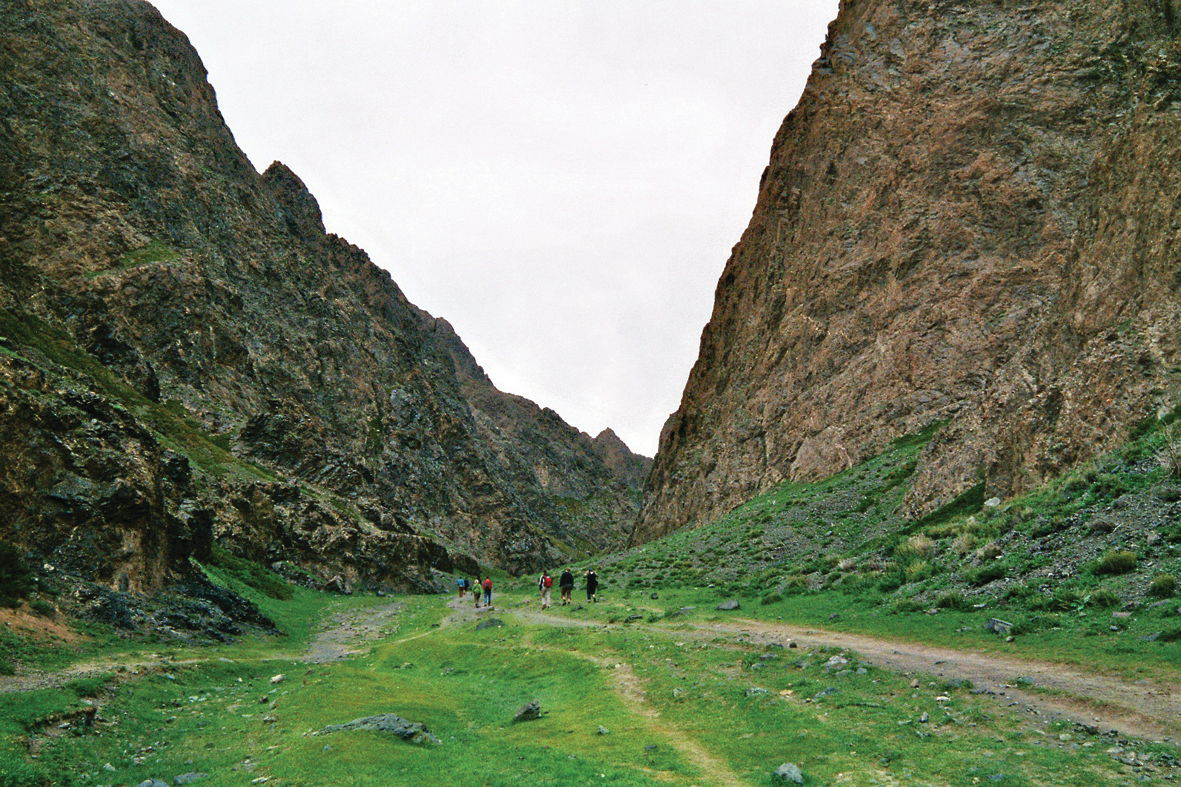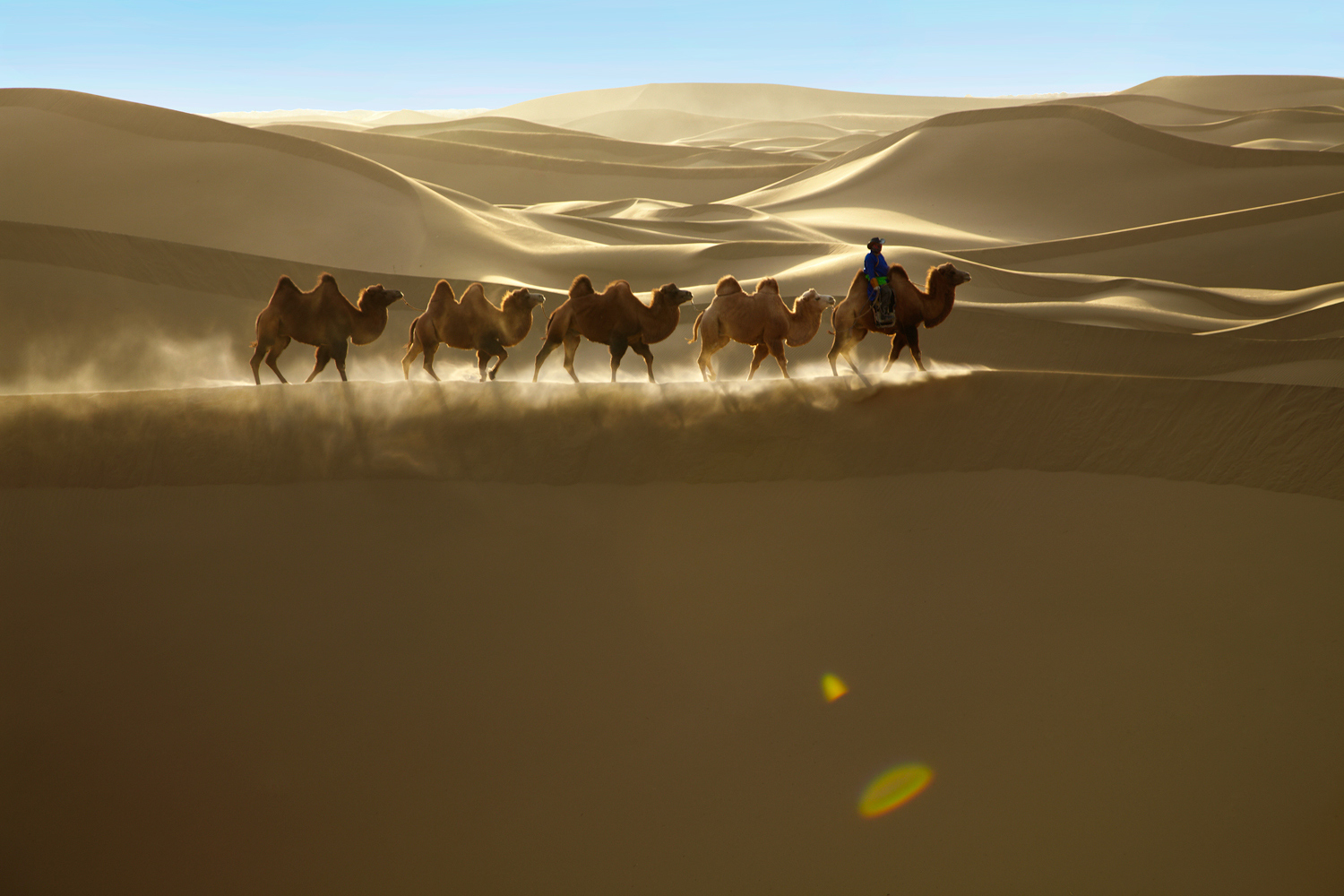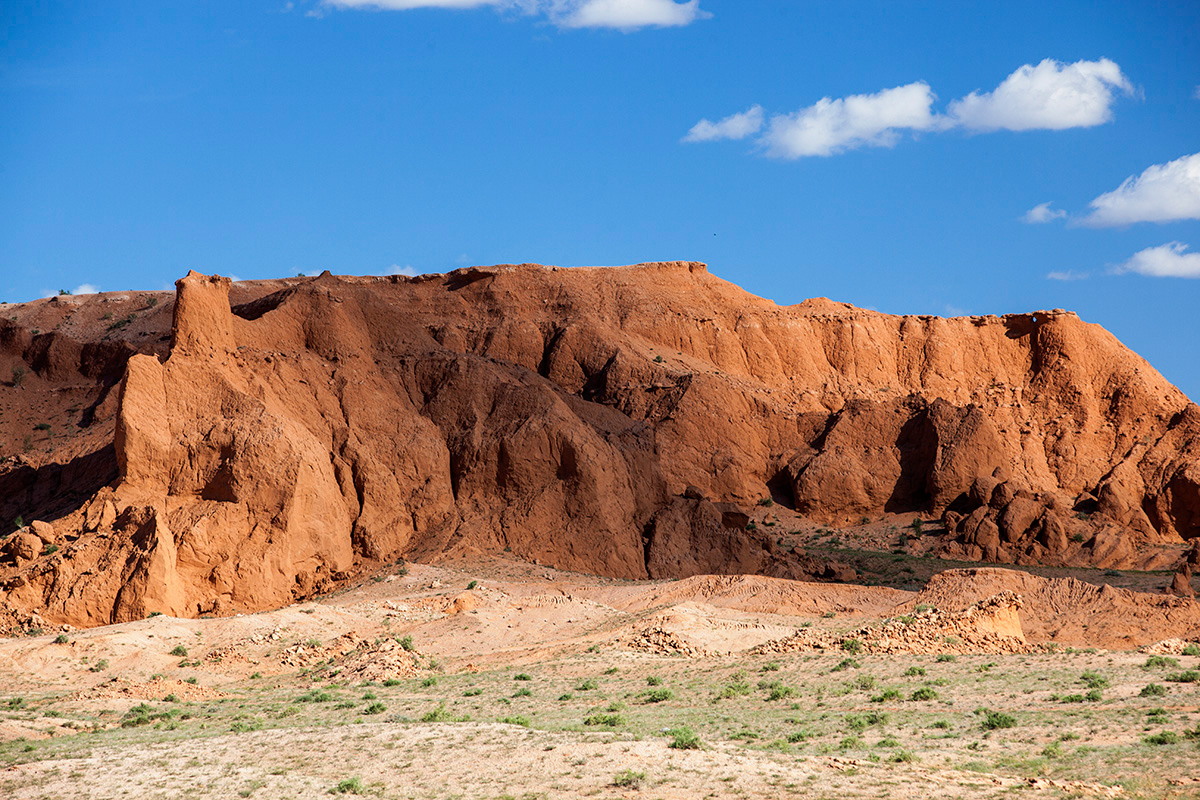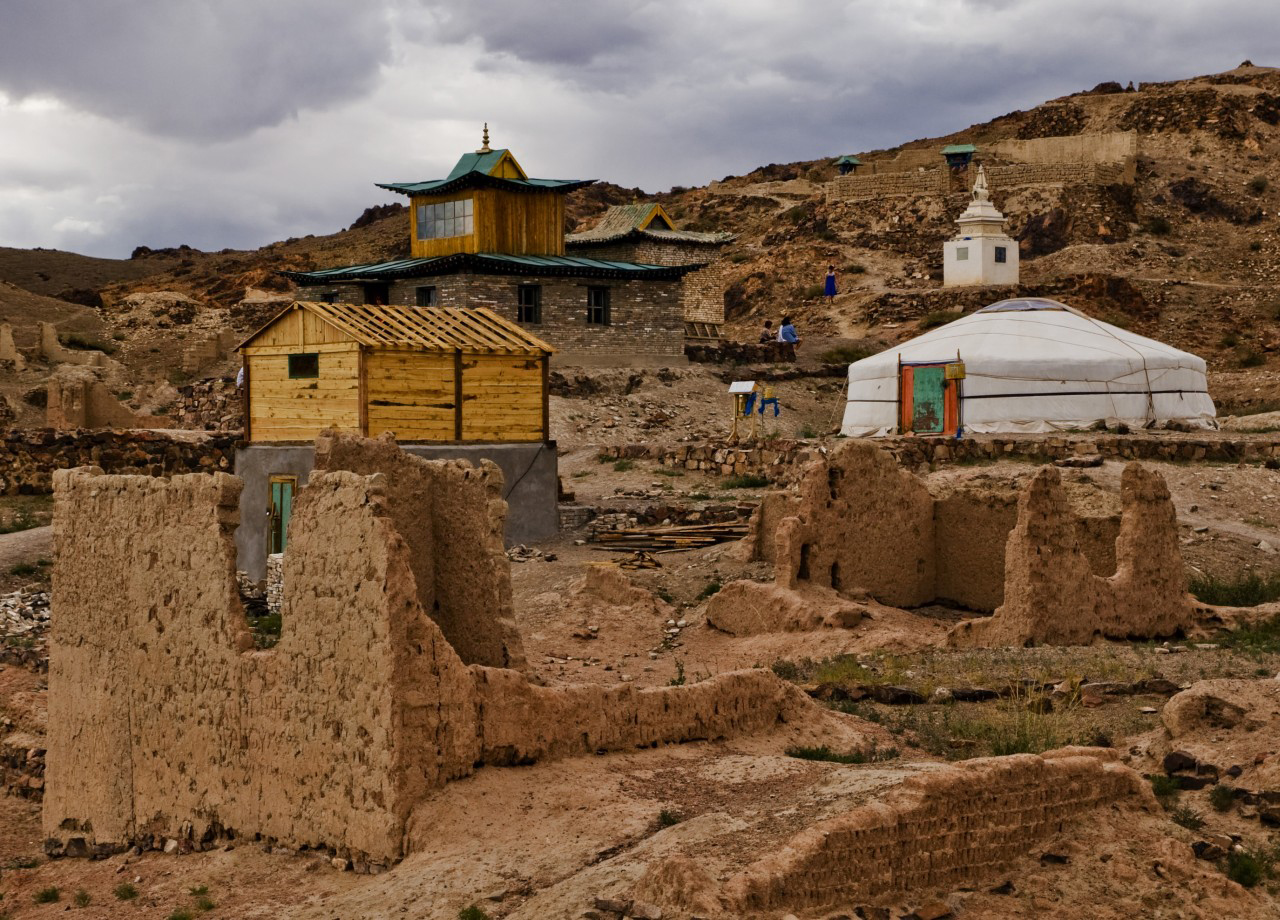
SOUTHERN MONGOLIA
The Southern Mongolia is known for its Gobi desert, one of the world’s most unique ecosystems. When people imagine of Mongolian Gobi, they imagine wide-open unfertile land or continuous massive sand dunes. When you travel Mongolian Gobi, your imagination will be broken completely. Mongolian Gobi is a combination of massive sand dunes, wide-open stony, but has vegetation steppes, marvelous rugged mountains rich in flora and fauna, oasis, rivers and streams. The region is famous for its unique nature formations, as well as rich dinosaur fossils and two humped Bactrian camels.
Places to visit: Gobi Gurvan Saikhan National Park, Eagle valley, Khongor sand dunes, Flaming cliffs, White stupa, Baga gazriin chuluu, Ongi temple.
Activities: Camel and horse riding, hiking, trekking, sightseeing, nomadic culture experiencing, wildlife viewing, visiting archeological site.
Gobi Gurvan Saikhan National Park
Situated to the west of Dalanzadgad town, Gobi Gurvansaikhan (“Three Beautifies of the Gobi”) park encompasses the series of ridges and valleys that make up the eastern end of the Gobi Altai Mountains. Surrounded by low plains, the mountains rise to 2200-2600 meters above sea level, and include the “Three Beauties” (three adjacent ridges named East, Middle, and the West Beauty), Zuulun, Sevrei, Gilbent, and Nemegt ridges. The park, which extends for more than 380 kilometers from west to east, has extremely varied landscape with rocky and sandy desert plains, precipitous cliffs and ravines, salt pans and oases. Gurvan Saikhan includes the highest diversity of plant and animal life in the Gobi Altai with over 620 species of flowering plants and all 52 species of mammals that are found in the Gobi desert region.
The Gobi Gurvan Saikhan National park features some of the most popular tourist destinations, including the picturesque gorge of Eagle valley, and the Khongor Sand Dunes-largest sand dunes of Mongolia, a spectacular sea of sand dunes bordered by red sandstone formations, an oasis and a saxaul forest. The Nemegt, Hermen tsav, and Bayanzag flaming cliffs, the sites of numerous important dinosaur fossil discoveries, also lie within the park.
Eagle Valley-Yolyn Am

The Eagle Valley ( Yolyn Am), a protected site in 1965, is 62 km north west of Dalanzadgad.
Very wide at the entrance, it narrows gradually into a remarkable gorge. A spring 2 or 3 km long winds its way through the defile and in July, freezing into a thick corridor of ice that stretches along a considerable distance. In earlier times, the blocks of ice rarely melted, being protected from the vicious sunlight. This however has changed in recent years, partially because of the multitudes of tourists that walk on the ice. You can still see ice here in July but it is almost completely melted by end of August. Following the canyon to the very end, one emerges into a beautiful wide valley. Surrounding mountains are home to argali, ibex, and many birds of prey, as well as numerous small rodents particular to the Gobi. A small museum marks the entrance to the protected zone and provides information on the petrified trees, fauna and flora of the Gobi. The walk along canyon must be done on foot.
Khongor Sand Dune-Khongoryn Els
 A Mongolian largest sand dune named Khongoryn Els has an extraordinary length of 180 kilometers and 15-20 kilometers wide, reaching a height of impressive 300-400 meters. One of the best places to observe booming dunes in the southern Mongolia is Khongor Sand dunes. The sounds have been variously described as singing, whistling, squeaking, roaring and booming. To stand before an enormous, gleaming white sand dune and realize that all of this was once an ancient lake bed or coastal plain is quite astonishing. The incredible roaring sounds of distant dunes is an unforgettable experience, particularly during the quiet hours of darkness and daybreak. Starting with the wind and tumbling particles of sand and culminating in picturesque drifts of rippled sand with an entire, dynamic, living community of plants and animals; this is one of nature's most remarkable cycles, and it is truly a phenomenon of wind. At the northern edge of the dunes on the bank of Khongor River, there is oasis, which is rich in plantation and supports drinking water of animal species in the region.
A Mongolian largest sand dune named Khongoryn Els has an extraordinary length of 180 kilometers and 15-20 kilometers wide, reaching a height of impressive 300-400 meters. One of the best places to observe booming dunes in the southern Mongolia is Khongor Sand dunes. The sounds have been variously described as singing, whistling, squeaking, roaring and booming. To stand before an enormous, gleaming white sand dune and realize that all of this was once an ancient lake bed or coastal plain is quite astonishing. The incredible roaring sounds of distant dunes is an unforgettable experience, particularly during the quiet hours of darkness and daybreak. Starting with the wind and tumbling particles of sand and culminating in picturesque drifts of rippled sand with an entire, dynamic, living community of plants and animals; this is one of nature's most remarkable cycles, and it is truly a phenomenon of wind. At the northern edge of the dunes on the bank of Khongor River, there is oasis, which is rich in plantation and supports drinking water of animal species in the region.
Flaming Cliffs-Bayanzag
 Bayanzag is located near by Bulgan Village, 597 km away to the south west of Ulaanbaatar city in Umnugobi province. This area is the birthplace of dinosaurs, and is renowned worldwide for the number of cretaceous dinosaur eggs and bones found here, which are discovered by famous American paleontologist Roy Chapman Andrews in 1922. In the same area he discovered petrified forests, remains of mammals and in particular the skeleton of a hornless rhinoceros, the largest known mammal in the world. Other finds in this location were complete dinosaur skeletons, eggs with a diameter of 10-15cm and hatch longs from the Cretaceous Period. Mongolia is considered second country of dinosaur finds while USA is first and 330 types of dinosaurs have been found in the world and 60 types of them are belong to Mongolia. This place is popular with the name “Flaming Cliffs” in the world, because American archeologists called so when they were in the Gobi in 1922. Not so far from the Flaming Cliffs, there is a forest of saxaul trees –Gobi trees with extremely deep roots. Bayanzag literally means "Rich in saxual trees". This tree only grows in central Asian Gobi. The tree is always green even in very dry summers. It supports nomads' animals with emergency feed in some very dry summers.
Bayanzag is located near by Bulgan Village, 597 km away to the south west of Ulaanbaatar city in Umnugobi province. This area is the birthplace of dinosaurs, and is renowned worldwide for the number of cretaceous dinosaur eggs and bones found here, which are discovered by famous American paleontologist Roy Chapman Andrews in 1922. In the same area he discovered petrified forests, remains of mammals and in particular the skeleton of a hornless rhinoceros, the largest known mammal in the world. Other finds in this location were complete dinosaur skeletons, eggs with a diameter of 10-15cm and hatch longs from the Cretaceous Period. Mongolia is considered second country of dinosaur finds while USA is first and 330 types of dinosaurs have been found in the world and 60 types of them are belong to Mongolia. This place is popular with the name “Flaming Cliffs” in the world, because American archeologists called so when they were in the Gobi in 1922. Not so far from the Flaming Cliffs, there is a forest of saxaul trees –Gobi trees with extremely deep roots. Bayanzag literally means "Rich in saxual trees". This tree only grows in central Asian Gobi. The tree is always green even in very dry summers. It supports nomads' animals with emergency feed in some very dry summers.
White Stupa-Tsagaan Suvarga
Tsagaan Suvarga (White Stupa) is located in Middle Gobi province. It is sheer slope and was an old seabed with sedimentary structure created by millions years and the different colors of the ground represent different times. The formation is over 50 m in its highest point and continues 400 m.
There is no clear date of geography research work and it is good spot take rest and overnight place driving to South Gobi desert from Middle Gobi desert. Its wall slope is looks like a ancient ghost city form a distance. There is 2 famous sites for explore. First one is a interesting cave which is 70 m long Khevtee Bosoo agui (Lie and Stand Cave) and not so far from the site. Second option is exploring Del uul (Back Mountain) for seeing rock drawings of Bronze Age. This is considered almost largest site of rock drawings in Central Asia.
Baga Gazriin Chuluu
These mountains with granite stone massifs are located in Middle Gobi Province. Baga Gazriin Chuluu, is a 15km long and 10 km wide stone massif, highest point is Tahilgat Mountain /1768 m/ in the Northwest part of the stone massif. Over 20 kinds of medical herbs and many species of animals such as wild sheep, ibex and marmot exist here, Surtiin am is one of many beautiful places in Baga gazriin stone massif. This is a narrow canyon with asp, birch, white wicker and elm tree, as well the ruin of a stone temple and the site of 2 Gers where monks lived and meditated since the 17 th century.
Also, there is a spring water which comes from under source is good for eye illness.
Ongi Temple ruins
 The ruins of Ongi temple are found in Saikhan-Ovoo village of Middle Gobi province and it is about 250 kms from Karakorum, en route to South Gobi. It is the ruin of a big monastery on the bank of the Ongiin River, which is one of the longest river in Mongolia has 435 km length and flows into Ulaan Nuur. A river takes source from the Khangai Mountain range in Ovorkhangai province..
The ruins of Ongi temple are found in Saikhan-Ovoo village of Middle Gobi province and it is about 250 kms from Karakorum, en route to South Gobi. It is the ruin of a big monastery on the bank of the Ongiin River, which is one of the longest river in Mongolia has 435 km length and flows into Ulaan Nuur. A river takes source from the Khangai Mountain range in Ovorkhangai province..
Formerly one of the largest monasteries in Mongolia, Ongi monastery was founded in 1660 and consisted of two temple complexes on the north and south banks of the Ongi River. The older southern complex consisted of various administrative buildings as well as 11 temples. The northern complex built in the 18th century, consisted of 17 temples-among them one of the largest temples in all Mongolia.
The Ongi monastery grounds also 4 religious universities and could accommodate over one thousand monks at a time. But during 1930s the monastery was completely destroyed and over 200 monks were killed by the communists. After democracy of Mongolia in 1990, monks returned to Ongi monastery where they had begun their Buddhist education as young children some 60 years prior. These monks started laying new foundation upon the old ruins, with a vision to restore Ongi monastery and revitalize Buddhism in Mongolia.
Recommended


Mongolian winter is the most incredible winter that one might experience and there is plenty to see and enjoy during a winter travel. Glittering white snow, clear fresh air, sun, and little chills are the image of Mongolian winter. Taking this fan...
Duration: 3 Days / 2 Nights
Destination: Gobi - Central


All of Mongolians celebrate the Lunar New Year, which is called in Mongolia “Tsagaan Sar” or the “White Moon”. It is widely celebrated throughout the country around January or February according to the combination of Solar-...




